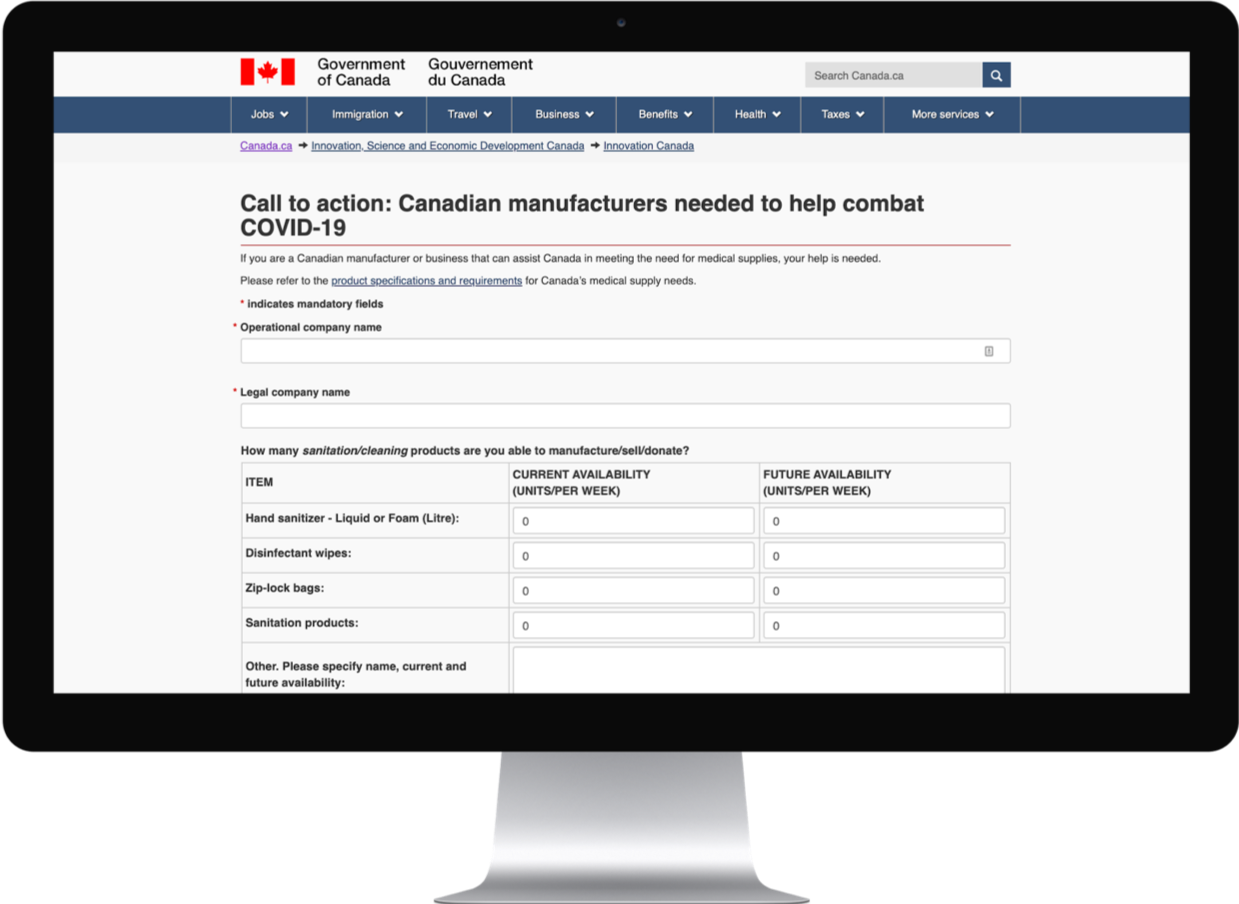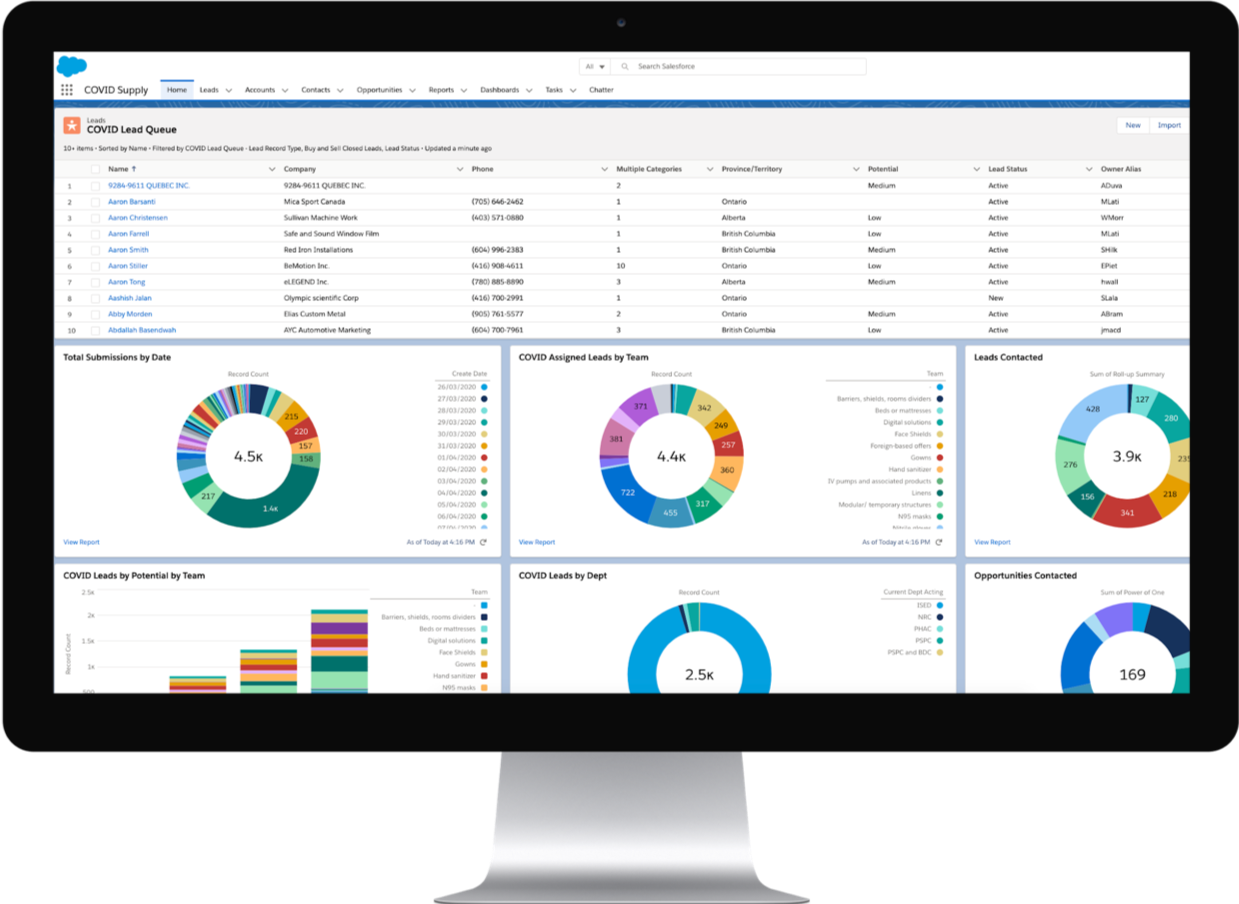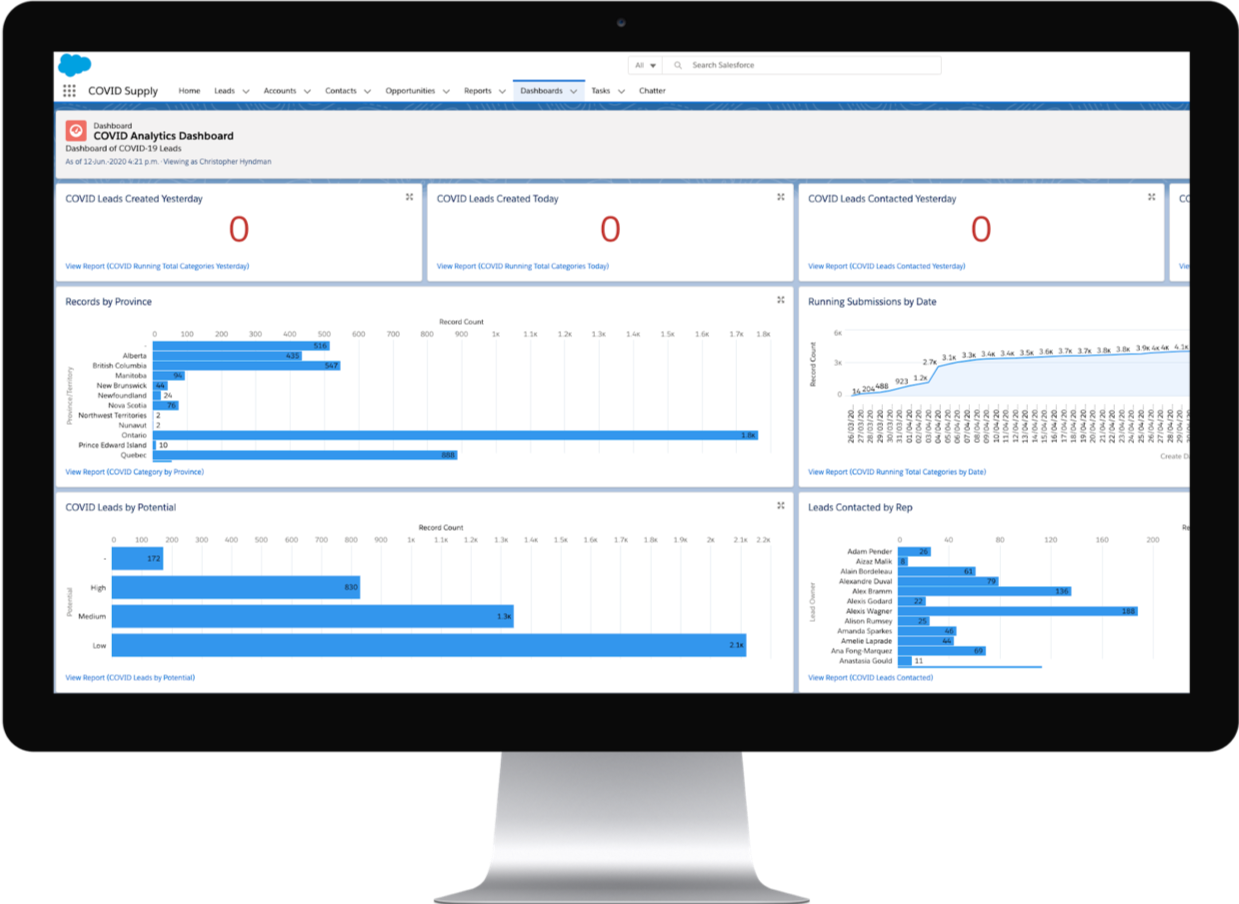Innovation, Science, and Economic Development Canada is a Trailblazer
Innovation, Science, and Economic Development Canada is a Trailblazer in meeting the need for medical supplies quickly and effectively.
“Our name alone — Innovation, Science, and Economic Development — embodies terms that are front and centre to what's going on right now in Canada and around the world,” said Chahine El Chaar, Director General, Digital Services Division for Innovation, Science, and Economic Development Canada. “We are a department that is looked to, if not expected, to be a leader that asks the right questions, surfaces the right ideas, and pinpoints the right solutions to help the country navigate crises like COVID-19.”
The Department of Innovation, Science, and Economic Development Canada (ISED) works to improve conditions for investment, enhance Canada's innovation performance, increase Canada's share of global trade, and build a fair, efficient, and competitive marketplace. In other words, its goal is to foster a growing, competitive, and knowledge-based economy through activities like investing in promising startups so that they have the finances and channels to bring an idea to market, partnering with the country's many think tank-style superclusters to realize the potential from creative, “design thinking” projects, supporting research initiatives, and more.
“This work took on new meaning with the introduction of COVID-19,” El Chaar continued. “Like many other government departments across the globe at the moment, ISED has been thrown headfirst into an unknown and quickly developing crisis. It’s been an ever-changing situation that, all of the sudden, made adaptability, speed, and resourcefulness more important than ever.”
The PPE Problem
Items ordered and received (information as of August 28, 2020)
Items
Quantities ordered
Quantities received (subject to testing)
Face shields
60,313,000
42,822,708
Gloves (pairs)
1,178,700,578
315,435,455
Gowns
132,855,160
86,740,627
Hand sanitizer
20,646,000
17,575,915
N95 respirators
153,170,220
61,696,636
Ventilators
40,547
725
Surgical masks
396,331,150
291,678,900
Non-medical masks
Face coverings
Cloth masks
18,000,000
8,500,000
1,769,200
3,107,000
About halfway through the crisis, Public Services and Procurement Canada announced that it ordered over 55 million face shields, 121 million+ N95 masks, 20 million+ liters of hand sanitizer, and more. Only 25% of the face shields, 10% of the N95 masks, and 33% of the supplies were secured.1
This was a call to action for departments like ISED, with expertise in out-of-the-box design thinking, to reimagine the nation’s PPE supply chain so that Canada could deliver more protective gear to teams that needed it. “Our supplies were shrinking while our cases were increasing, which is never a good trend,” said Stephan Belanger, Director General, Innovator Experiences Branch for ISED. “We started asking ourselves ‘what can we do? What else is out there that we don't know about?' We needed to find a way to tap into more resources, fast, especially with the possibility of a second wave of the virus looming over us."
Bridging Suppliers and Demand
El Chaar, Belanger, and team launched the ISED COVID-19 Call-to-Action Supply Portal on Salesforce, a Protected B certified platform. This website assists Canada in procuring material from businesses, manufacturers, and suppliers that either have a supply of PPEs, know how to source PPEs internationally, or are able and willing to retool their manufacturing process to produce PPEs. Here’s how it works.
Web-to-lead, a feature of Salesforce Sales Cloud, fuels a series of form fields capturing the details of a PPE donation; what the item is, quantity available, shipping details, and more is all captured by the web form and transferred using queue management to the appropriate team in the CRM.


The ISED team uses the lead information to review and contact the lead in order to understand is this supplier ready to supply or does it still need support to start manufacturing? Does this supplier meet certifications or compliance requirements? Can this business scale up its supply if we need to call on them again in a hurry? Once the lead is approved, it is promoted as an opportunity in the CRM system and advanced to the next step in the workflow.
ISED then reviews the profile and uses it as background when reaching out to suppliers with additional questions. If the lead is approved, the next step is to facilitate PPE delivery. “It is an online, collaborative, transparent process that reduced email tracking and spreadsheet uploads, captured data in a structured fashion for easier sharing and reporting, and enabled us to focus more time and energy on high-potential leads,” said Belanger.
The portal is available in both English and French to comply with Canadian laws.
Results and Impacts
The COVID-19 Call-to-Action Supply Portal went live in just two days — a time-to-value metric that has unlocked both quantitative and qualitative benefits.
On the quantitative side, the portal has allowed ISED to secure over 70 million units of PPE from 4,500+ leads and 170+ confirmed suppliers, roughly 45 million surgical masks, 23.7 million gowns, 2.9 million face shields, 21,500 ventilators, and 300,000 liters of hand sanitizer. Ie: 4,500+ increase in potential suppliers, 170+ new supply resources, and 70+ million PPE units that ISED would not necessarily have had access to otherwise.


Twenty-five integrated reports and four dashboards give everyone, from analysts to leadership, real-time visibility into the status of supplies across 20 PPE categories, as well as the lifecycle of a lead, where open opportunities are in the pipeline, and hot spots in terms of demand across the country. These reports and dashboards also give the team the kind of data-driven insights departments and agencies need in order to anticipate timelines and set realistic expectations so that partners in the mission can plan accordingly, which is especially important with the quickly moving, constantly changing nature of the COVID-19 crisis.
On the qualitative side, the team found a way to streamline the connection between government and industry, and encourage both sectors to work together in response to COVID-19. “Our experience serves as an example for any department or government organization, dealing with any crisis, that a strategy doesn’t have to be perfect — it just has to be fast,” said El Chaar. “Government has this mindset that says ‘resources are what they are,’ and ‘things have to move at this pace’ when, in reality, you can always be resourceful, rise to the occasion, and deliver meaningful projects much faster. That’s the outlook we need when dealing with a crisis of this scale.”






